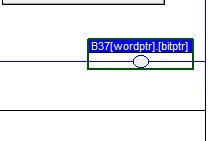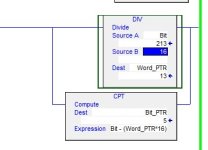In an old PLC5 I see an output like this
B37
-()-
[N19:21]
If I remember correctly that says to set the bit of word
37 thats equal to the value of N19:21
So if N19:21 = 26 then bit 26 of the word 37 would go true
So how would I convert that to a CLX instruction
Thanks
B37
-()-
[N19:21]
If I remember correctly that says to set the bit of word
37 thats equal to the value of N19:21
So if N19:21 = 26 then bit 26 of the word 37 would go true
So how would I convert that to a CLX instruction
Thanks








